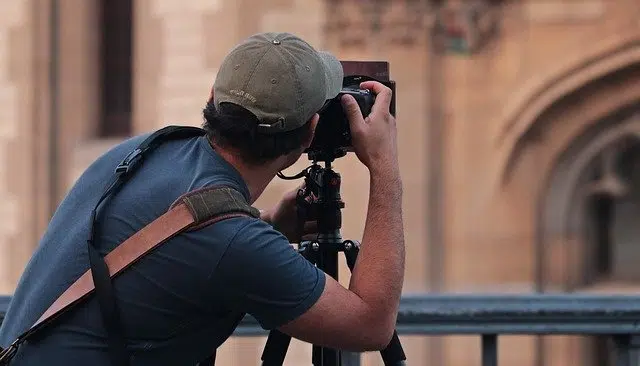
The concept of focus can be linked to concentration or a particular gaze.
Focus is a word used in the Spanish language to refer to the action and consequence of focusing . This verb, in turn, has four definitions according to the information provided by the Royal Spanish Academy (RAE) : ensuring that the image of an object that is produced in the focus of a lens is captured clearly on a plane or object specific; using the viewfinder of a camera to ensure that the image you want to capture is in the center of the plane; project a beam of light or a specific number of particles onto a particular point ; and direct attention towards a topic, issue or problem from assumptions developed in advance in order to resolve it correctly.
Interactional approach
The concept of focus gives rise, as can be seen, to multiple notions. To cite one case, there is an interactional approach that is defined as a systems theory that is framed in the field of communication sciences . This approach studies the pragmatic consequences of interpersonal communication, conceiving communication as an open structure of interactions that occur in a particular context.
The interactional approach is based on three postulates: the principle of totality (which indicates that any alteration in one part of the system influences the rest of the parts, transforming the whole), the principle of circular causality (referring to complex links of implications mutual relations, actions and feedbacks contemplated in a communication cycle) and the principle of regulation (that which establishes that every communicative act must adapt and respond to certain norms, rules and conveniences).
A comprehensive understanding
On the other hand, the so-called integral approach is part of a theory that tries to achieve the broadest possible understanding of both the human being and the universe, through the combination of science and intuition with spiritual roots . The integral approach seeks for this understanding to provoke a global revolution that encompasses the body, mind and spirit.
In learning , the comprehensive approach refers to educational methods that attempt to create better opportunities and allow all learners to receive an education appropriate to their lifestyle, offering them a range of options in terms of information, job opportunities and social mobility. Examples of education with a comprehensive approach are distance studies , where students adhere to an extremely flexible educational system in schedules and educational planning , with vertical and unidirectional teaching (that is, each student has the possibility of interacting directly with their teacher and work on those points that are not going well in their learning. These sporadic meetings between student and teacher are called tutorials .

The idea of focus is frequently used in the field of photography.
Manual focus and auto focus
In photography there are two types of focus: manual and automatic.
Modern digital cameras have automatic focuses of various types, such as: the classic one that allows you to simply focus and capture the image, the continuous one that allows you to track the object you want to capture while it is in motion, and the intelligent one that integrates the classic (also called simple) and the continuous agree and allow one or the other to be used interchangeably. It is true that much progress has been made in this type of technology, however, automatic mode is not useful in all cases. Sometimes manual focusing is necessary to properly capture a particular composition .
When we want to capture an image where a tiny detail stands out; In this way, we can achieve a much more precise capture, allowing certain elements of the scene to stand out. It can also be extremely useful for urban spaces , in case you want to capture a fixed point and the rest of the city life is not captured in the image. On the other hand, it can be extremely useful to take an image of an object that is hidden behind another. With autofocus, it is usually difficult to focus correctly on the desired object. However, manual autofocus will allow us to take a precise snapshot. Finally, it can also be extremely useful for architectural photographs and in compositions where there is high contrast , where the autofocus is often confused and has serious problems achieving good focus.
Learning to use manual focus is not an easy task, but to acquire this skill you need to practice a lot. In the case of moving photographs, photographers recommend using the technique called prefocus , which involves placing the focus on a fixed point (through which we are convinced the subject will pass) and when we think it is time, take the photograph .
